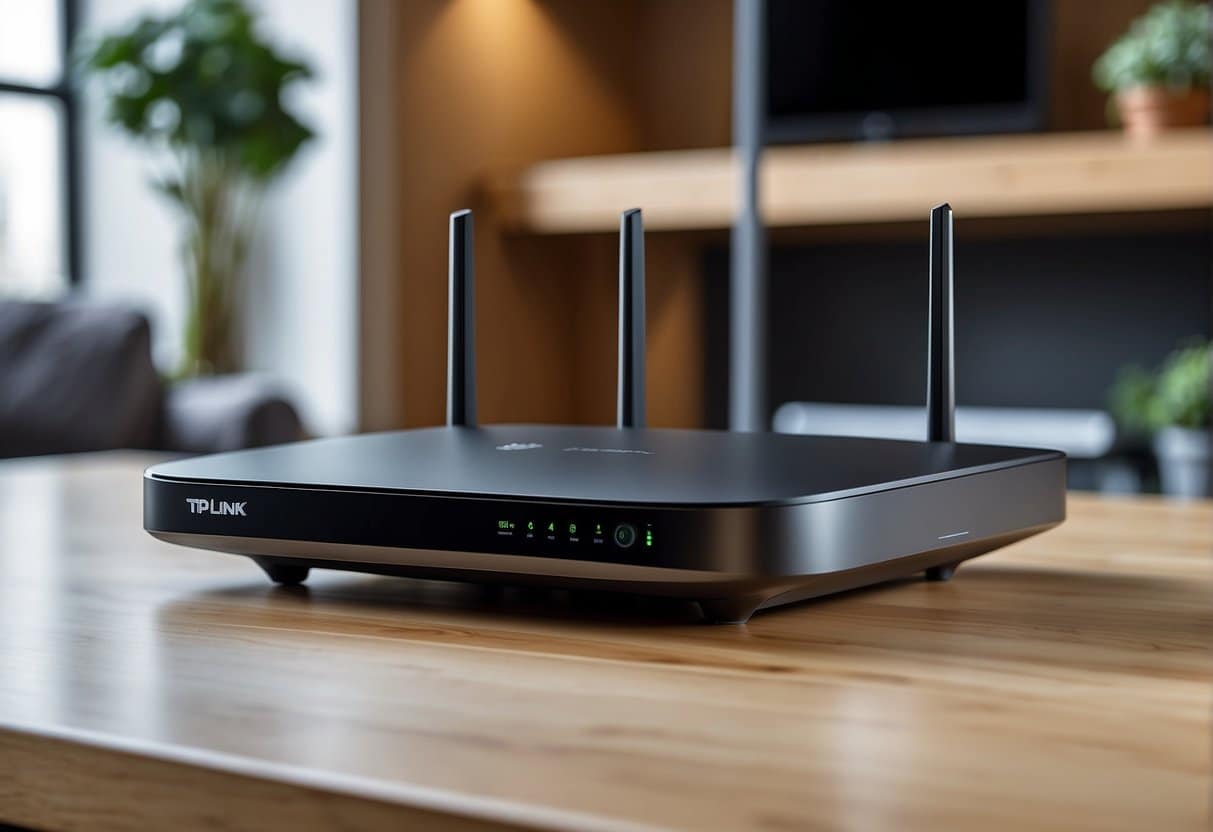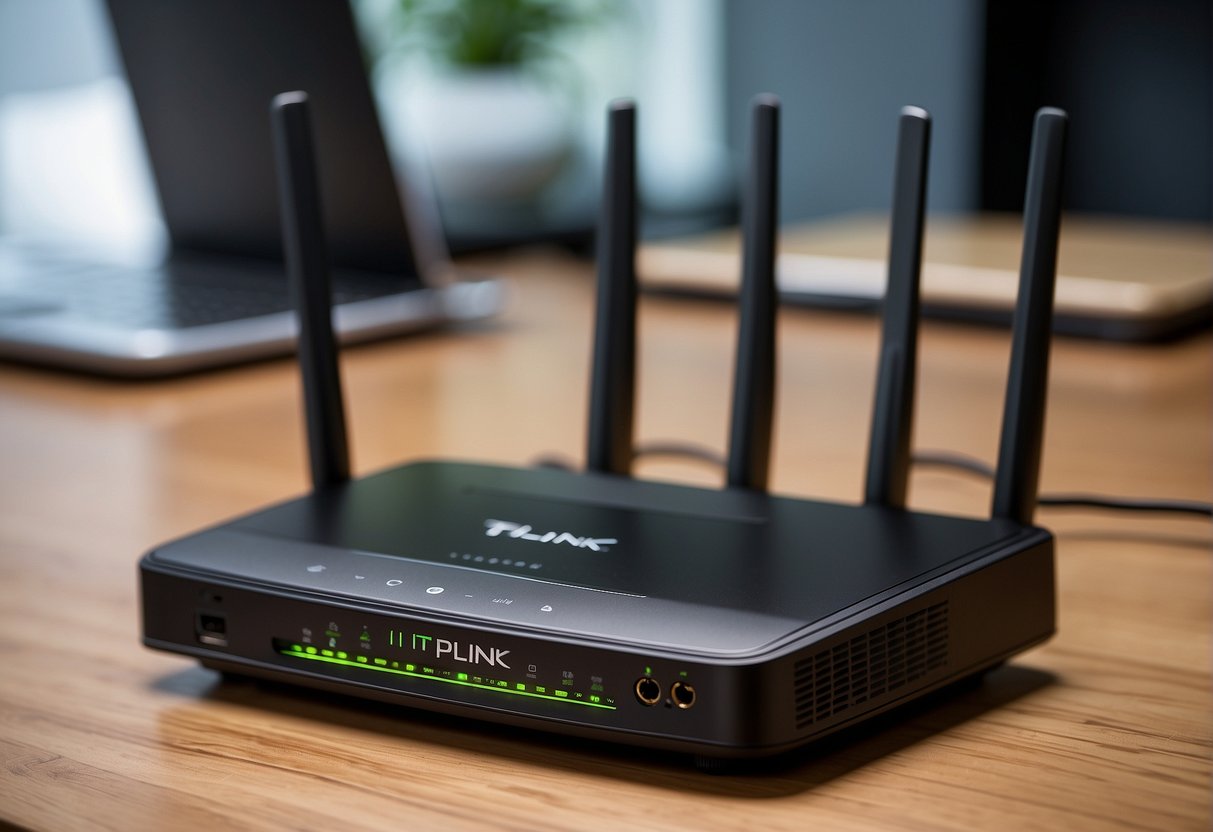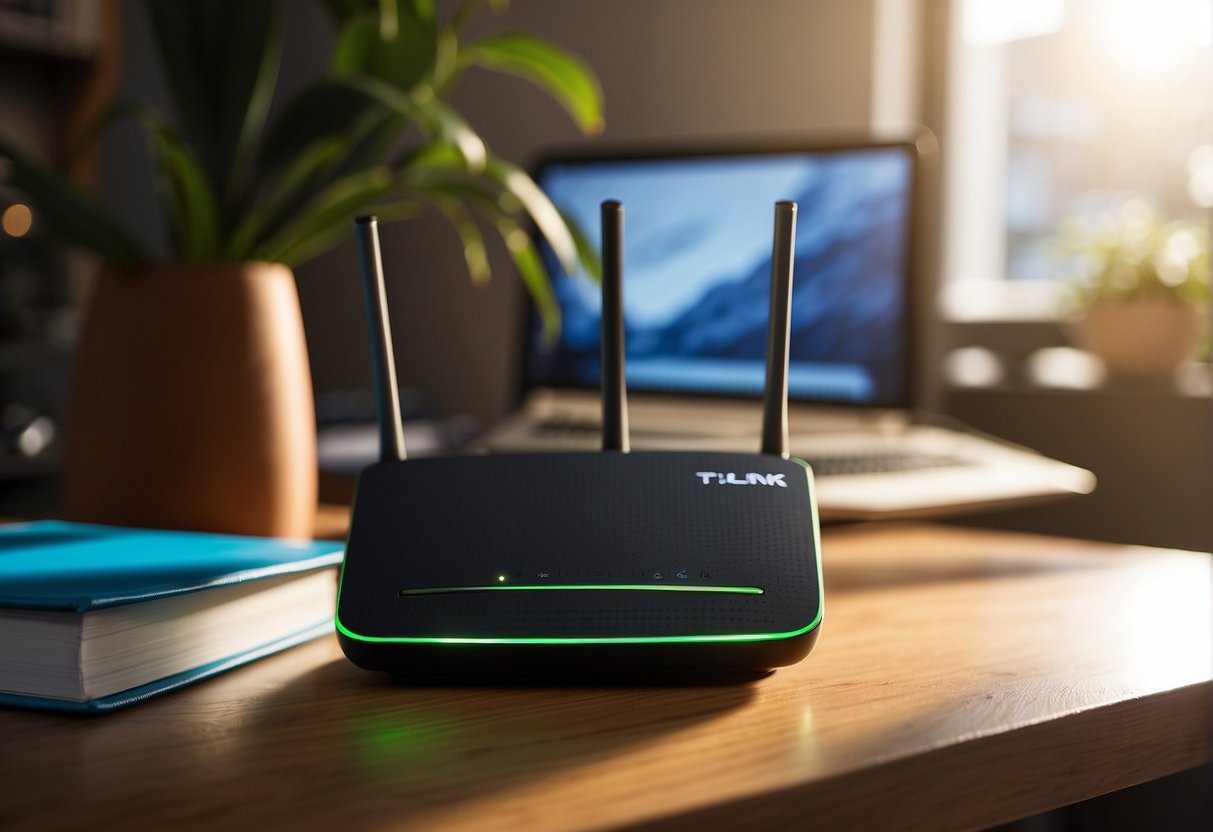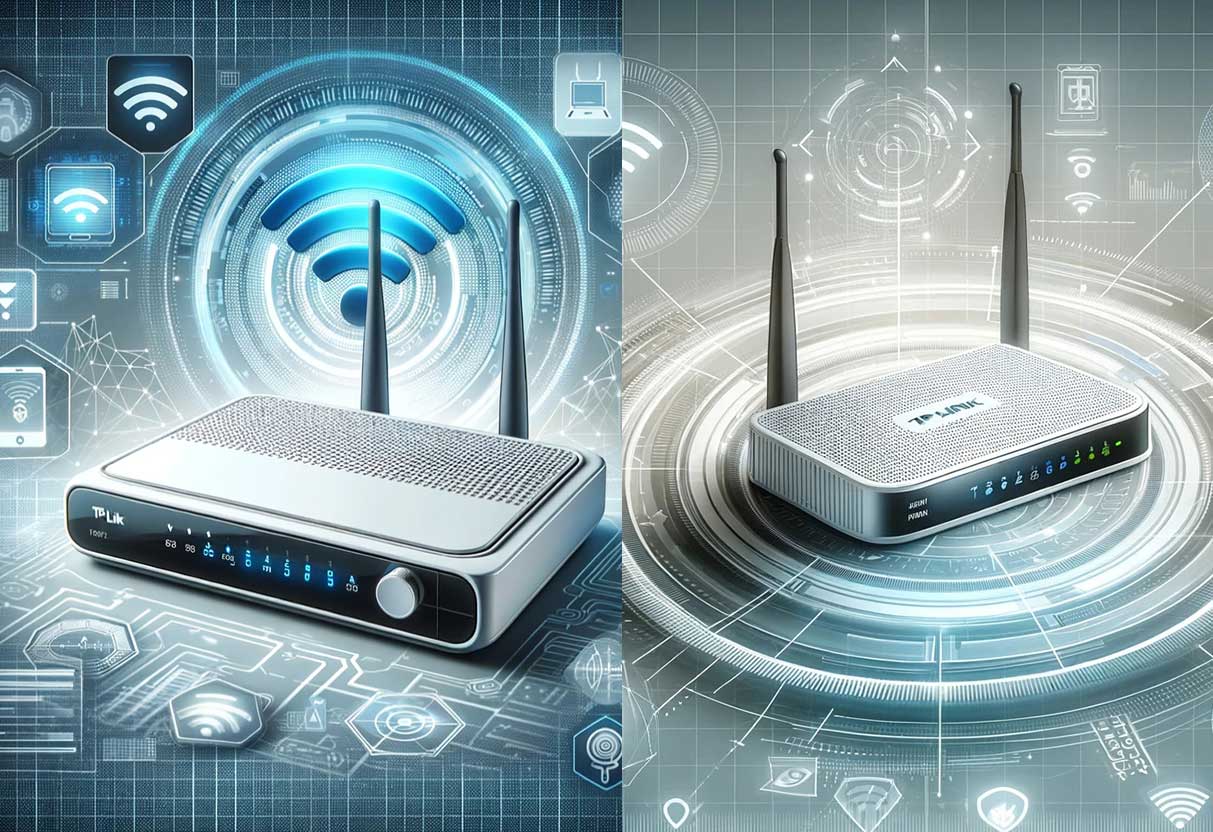Experiencing slow internet speeds on a home network can be frustrating, particularly if the router is not performing up to its potential. For users with TP-Link routers, there are several steps that can be taken to improve connectivity and speed. This guide will provide a comprehensive overview of methods to enhance the performance of your TP-Link router, ensuring a more efficient and reliable home internet experience.
Adjusting settings and understanding the router’s capabilities can have a substantial impact on internet speeds. From updating firmware to optimizing wireless channels, the guide will cover a range of strategies that are both effective and easily implemented by the user. These techniques are designed to help alleviate common issues such as signal interference, bandwidth congestion, and improper setup configurations that can hinder a TP-Link router’s speed.
Maximizing the potential of a TP-Link router not only involves technical adjustments but also physical considerations such as router placement and the use of compatible hardware. Addressing these factors can contribute to a more stable and faster network connection. The information provided will be beneficial for those looking to get the most out of their TP-Link router and enjoy an improved online experience across all connected devices.
Understanding Your TP-Link Router
To enhance the speed of your TP-Link router effectively, it is essential to fully grasp the specifics of your device. This includes identifying the exact router model, understanding the firmware that operates it, and being aware of its specifications.
Identify Your Router Model
Knowing your router’s model is crucial because it determines the capabilities and limitations of your device. The model number can typically be found on a label located at the bottom or back of your router. Examples of common TP-Link router models include Archer C7, Archer AX50, or TL-WR841N.
Firmware Overview
The firmware of a router is the software that provides network protocols, security features, and administrative controls. To ensure optimal performance, verify that your TP-Link router is running the latest firmware version. This can be checked on TP-Link’s official website by entering your router model’s information.
Understanding Router Specifications
Router specifications influence overall performance, including speed, range, and the number of devices that can be supported simultaneously. Key specifications to note are:
- Wi-Fi Standards: Such as 802.11n (Wi-Fi 4), 802.11ac (Wi-Fi 5), or 802.11ax (Wi-Fi 6).
- Frequency Bands: Typically 2.4 GHz and 5 GHz.
- Data Transfer Rates: Measured in Mbps or Gbps.
- Antenna Type and Quantity: Affects range and signal quality.
- Processor and RAM: Contributes to the router’s ability to manage traffic and handle multiple connections efficiently.
Pre-Configuration Essentials

Placement Optimization
The central location of a home or office is often the best spot for a router. This ensures even distribution of the wireless signal. It’s advised to place the router away from ground level, on a shelf or mounted on a wall, to enhance the signal reach. The TP-Link guide suggests that elevating the device can prevent many signal disruptions commonly found around floor level.

- At a height of about 2 meters off the ground.
- In a centralized location relative to the devices that connect to it.
- Away from metal objects and appliances that emit electromagnetic waves.
Interference Minimization
Electrical devices and metal structures can cause interference, leading to a reduction in router performance. To minimize this:
- Keep the router away from microwave ovens, cordless phones, and Bluetooth devices.
- Avoid placing the router near large metal surfaces, such as filing cabinets or refrigerators.
- Use Wi-Fi analyzers to check for channel interference from other networks and switch to a less congested channel if necessary.
Configuring Your Router for Speed
To effectively increase your TP-Link router speed, one must ensure the device’s firmware is up to date, its network settings are optimal for the environment, and Quality of Service (QoS) is tailored to prioritize bandwidth for critical applications.
Firmware Update
It is critical to maintain the latest firmware on a TP-Link router. Users should periodically check the official TP-Link website for firmware updates to improve security, functionality, and performance. Steps to update the firmware:
- Visit the TP-Link Support website.
- Enter the model number of your router.
- Download the latest firmware version.
- Access the router’s admin interface, typically by navigating to
http://192.168.0.1orhttp://192.168.1.1in a web browser. - Navigate to the System Tools or Advanced section and select Firmware Upgrade.
- Upload the downloaded firmware file and apply the update.
- Allow the router to reboot if needed.
Optimal Network Settings
Proper network configuration can substantially enhance router speed. Key settings include:
- Channel Selection: Routers can broadcast on multiple channels. For 2.4 GHz networks, channels 1, 6, and 11 are generally recommended to minimize interference.
- Bandwidth: Many modern routers offer options for 20 MHz, 40 MHz, and even 80 MHz channel bandwidths. Higher bandwidth can provide faster connections but may increase interference.
- Network Mode: Use the router’s 5 GHz band for newer devices that support it, as it typically offers faster speeds and less interference.
QoS Configuration
Quality of Service (QoS) allows users to prioritize traffic from specific devices or applications. This ensures high-priority tasks receive appropriate bandwidth.
- Prioritize by Device: Assign a higher priority to devices that need consistent speed, like desktops or gaming consoles.
- Prioritize by Application: Give priority to bandwidth-intensive or latency-sensitive applications such as streaming services or online games.
Configuring QoS typically involves accessing the router’s admin panel and navigating to the QoS settings, where users can set priority levels based on their specific needs.
Wi-Fi Network Optimization
Optimizing a TP-Link router’s Wi-Fi network involves adjusting settings that directly affect performance, such as channel selection, bandwidth, and Wi-Fi standards. These adjustments can lead to significant improvements in connection stability and speed.
Channel Selection
Selecting the optimal Wi-Fi channel is critical for minimizing interference and improving signal quality. TP-Link routers offer a range of channels; users should choose one that is least congested in their area.
- Useful Tool: Wi-Fi analyzer apps can help identify the least crowded channel.
- Best Practice: Channels 1, 6, or 11 are typically recommended for 2.4GHz as they do not overlap.
Bandwidth Settings
Adjusting the bandwidth settings can lead to a boost in Wi-Fi speed, especially in environments with multiple devices.
- 2.4GHz: Offers up to 20MHz which is ideal for range and compatibility.
- 5GHz: Supports wider channels up to 40MHz, 80MHz, or 160MHz, beneficial for high-speed connections.
Wi-Fi Standards and Frequencies
Different Wi-Fi standards can impact the overall speed and reliability of a network. TP-Link routers generally support a range of standards from 802.11a/b/g/n to 802.11ac and 802.11ax.
- 2.4GHz Frequency: Better range but potentially slower speeds due to congestion.
- 5GHz Frequency: Faster speeds with less interference but limited range. Use the 802.11ac or 802.11ax standards for the best performance on this band.
Advanced Settings for Speed Enhancement
To maximize TP-Link router speed, one can manipulate advanced settings that govern how the router manages data and connects to external servers. These adjustments may lead to noticeable improvements in internet performance.
Traffic Analysis
Traffic Analysis tools enable users to monitor and prioritize network traffic. By using Quality of Service (QoS) settings, one can assign higher priority to bandwidth-intensive applications, ensuring smoother video streaming or gaming experiences.
- Steps to configure QoS:
- Access the router’s admin panel, typically through a web browser.
- Navigate to
QoS Settings. - Set bandwidth priority for applications or devices as needed.
Router Reboot Schedule
Regularly scheduled Router Reboots can prevent memory leaks and remove temporary bugs that slow down the router. Automating reboots ensures the router performs optimally without manual intervention.
- To set a reboot schedule:
- Go to
System Tools. - Select
Reboot Schedule. - Choose the frequency and time for the router to restart.
- Go to
DNS Server Optimization
Changing to a faster DNS Server can reduce the time it takes to resolve domain names into IP addresses, which contributes to quicker page loads and more responsive browsing.
- Instructions for changing DNS servers:
- Enter the router’s settings page.
- Locate
DHCPorNetwork Settings. - Replace the current DNS with preferred servers (e.g., 1.1.1.1 for Cloudflare or 8.8.8.8 for Google).
Security Measures to Prevent Speed Throttling
Securing a TP-Link router not only safeguards the network but can also improve speed by preventing unauthorized access and bandwidth throttling. Implementing robust security measures is critical to maintain optimal performance.
Network Encryption
Encrypting the network is the first line of defense against intruders who might throttle the speed. Users should:
- Enable WPA3 encryption: The latest Wi-Fi Protected Access protocol provides the highest level of security.
- Change the default password: A strong, unique password prevents unauthorized access.
Firewall Optimization
A router’s firewall controls data packets entering and leaving the network. For better speed and security:
- Adjust Firewall Settings: Ensure that the firewall is set up to filter out unwanted traffic without overly restricting data flow.
- Monitor and update rules: Regularly review firewall rules to remove any unnecessary restrictions that may impede speed.
Managing Connected Devices
Limiting and managing the devices connected to a TP-Link router is important for maintaining speed.
- Set Device Limits: Restrict the number of devices that can connect simultaneously to prevent bandwidth congestion.
- Monitor connected devices: Regularly check for unknown devices that may be using the network without permission.
Hardware Considerations
To ensure your TP-Link router operates at peak performance, attention to hardware components is crucial. Assessing the quality of Ethernet cables and considering a router hardware upgrade are fundamental steps to enhance speed.
Quality of Ethernet Cables
The type of Ethernet cable connecting your devices to the TP-Link router can significantly affect network speed. Here’s how:
- Cat 5e: Supports speeds up to 1 Gbps but best for up to 100 Mbps.
- Cat 6: Suitable for speeds up to 10 Gbps over shorter distances (up to 55 meters).
- Cat 6a: Maintains 10 Gbps speeds for longer distances (up to 100 meters).
To optimize connection speed, one should use at least Cat 5e cables. For future-proofing and enhanced performance, especially with Gigabit internet plans, upgrading to Cat 6 or Cat 6a cables is recommended.
Router Hardware Upgrade
Routers have varying capabilities based on their internal hardware. Consider these specifics:
- Processor: A faster processor can handle more data at quicker rates, which results in increased performance.
- Memory: More memory allows for better multitasking and handling of simultaneous connections.
Upgrading to a TP-Link router with a multi-core processor and at least 128MB of RAM can help in managing high-bandwidth activities and reduce latency. Users should ensure that their router’s hardware is not the bottleneck in their network to achieve a significant speed increase.
Regular Maintenance and Monitoring
Maintaining optimal performance of a TP-Link router involves performing regular speed checks and monitoring network activity with dedicated software tools.
Routine Speed Tests
Conducting routine speed tests is crucial for assessing the performance of a TP-Link router. Users should:
- Schedule regular speed tests: A bi-weekly or monthly check can help track the router’s performance.
- Compare results: Note any significant changes in download and upload speeds to identify potential issues early.
Software Tools for Monitoring
Utilizing software tools can provide in-depth insights into network performance and health. Users should consider:
- Installing TP-Link’s proprietary tools: TP-Link Tether app can help monitor traffic, clients, and settings.
- Third-party applications: Tools like Wi-Fi Analyzer can offer additional layers of information, such as channel congestion.
Enhancing Hardware Performance
Improving TP-Link router speed often involves hardware adjustments. Regularly restarting the router and upgrading components, when necessary, are straightforward strategies to maintain peak performance.
Restarting the Router Regularly
Restarting a TP-Link router can refresh its memory and clear potential software hiccups. It’s recommended to restart the router periodically to ensure it’s operating efficiently. Scheduling automatic restarts, if available, can help maintain consistent network speeds.
Upgrading Antennas or Hardware if Necessary
When TP-Link routers signal strength is lacking, considering an antenna upgrade could be beneficial. High-gain antennas can enhance signal quality and range. Additionally, for older models that struggle to keep up with modern internet speeds, it may be time to upgrade your TP-Link router to a newer device that supports the latest wireless standards and technologies.
Troubleshooting Slow Speed Issues
When encountering slow speed on a TP-Link router, it is essential to identify whether the issue stems from connectivity problems or hardware malfunctions. Correctly diagnosing the root cause is the first step towards resolution.
Diagnosing Connectivity Problems
One should begin by checking the Internet speed directly from the modem to ensure the service provider is delivering the promised speed. This can be done by connecting a device directly to the modem via Ethernet and running a speed test. If the results are significantly lower than expected, the issue may lie with the Internet Service Provider (ISP). On the other hand, if the modem speed is as expected, the next step is to run a wireless speed test using a device connected to the TP-Link router. Comparison of the wired and wireless results can pinpoint if the slowdown is occurring over the wireless network.
- Wired speed test: Conduct with Ethernet connection to the modem.
- Wireless speed test: Conduct on a device connected to the TP-Link router.
Isolating Hardware Malfunctions
If the wireless test indicates slower speeds, it’s time to check the router’s hardware. An examination of cables and connectors for any visible damage or loose connections is advised. Should the cables be intact, restarting the router may resolve temporary glitches. For persistent problems, one can try resetting the router to factory settings, keeping in mind that this will erase all customized settings.
- Visual check: Inspect cables and connectors for damage or disconnections.
- Restart router: Power off the router, wait 30 seconds, and power it back on.
- Factory reset: Use this as a last resort; it will erase all custom settings.
Professional Support and Advice
It is essential for users to identify the right time to seek professional help and utilize official support resources effectively to enhance their TP-Link router speed.
When to Seek Professional Help
Users should consider professional assistance when they have systematically followed optimization guides yet still experience persistent speed issues. Common indicators for this include frequent disconnections, very low data throughput, and inability to access the router’s administrative interface. If the router’s firmware is up-to-date and the issue is not resolved by basic troubleshooting steps such as restarting the device, it may signify a deeper underlying issue.
Consulting Official Support Resources
TP-Link offers a range of support resources for users, including:
- User Manuals: Detailed guides that provide specific instructions for configuring and optimizing router settings.
- Online FAQ: A curated list of frequently asked questions that address common issues and provide straightforward fixes.
- Community Forums: Platforms where users can share their experiences, solutions, and receive peer-to-peer advice.
- Technical Support: Contact information for TP-Link’s technical support team, available through phone, email, or live chat.
Users are advised to have their router model and firmware version on hand when seeking support for expedited assistance.
Frequently Asked Questions
When seeking to enhance the speed of a TP-Link router, the following questions emphasize the most pertinent inquiries and corresponding optimization techniques.
How can I optimize the settings of my TP-Link router for better performance?
One can optimize TP-Link router settings by updating to the latest firmware, adjusting the QoS settings to prioritize bandwidth for critical applications, and ensuring that the MTU settings are compatible with the ISP.
What steps can I take to enhance the wireless signal strength of my TP-Link router?
Improving wireless signal strength involves placing the router in a central location, reducing interference, and adjusting the antenna direction.
Why might my TP-Link router’s speed be slower than the speed of my modem?
TP-Link router speeds may be slower due to the limitation of hardware ports or when multiple devices share the network, consuming more bandwidth and reducing individual device speed.
What practices should I follow to effectively extend the range of my TP-Link router?
Extending the range can be achieved by installing range extenders or access points and strategically positioning the router away from obstacles and reflective surfaces.
How do I update my TP-Link router’s firmware to potentially increase its speed and stability?
Router speed and stability may improve by regularly checking for firmware updates from the TP-Link Support page and following their step-by-step update guide.
Can adjusting the channel and bandwidth settings on my TP-Link router improve my network speed?
Adjusting the router’s channel settings to less congested ones, and selecting the appropriate bandwidth, can lead to better network speeds and performance.


